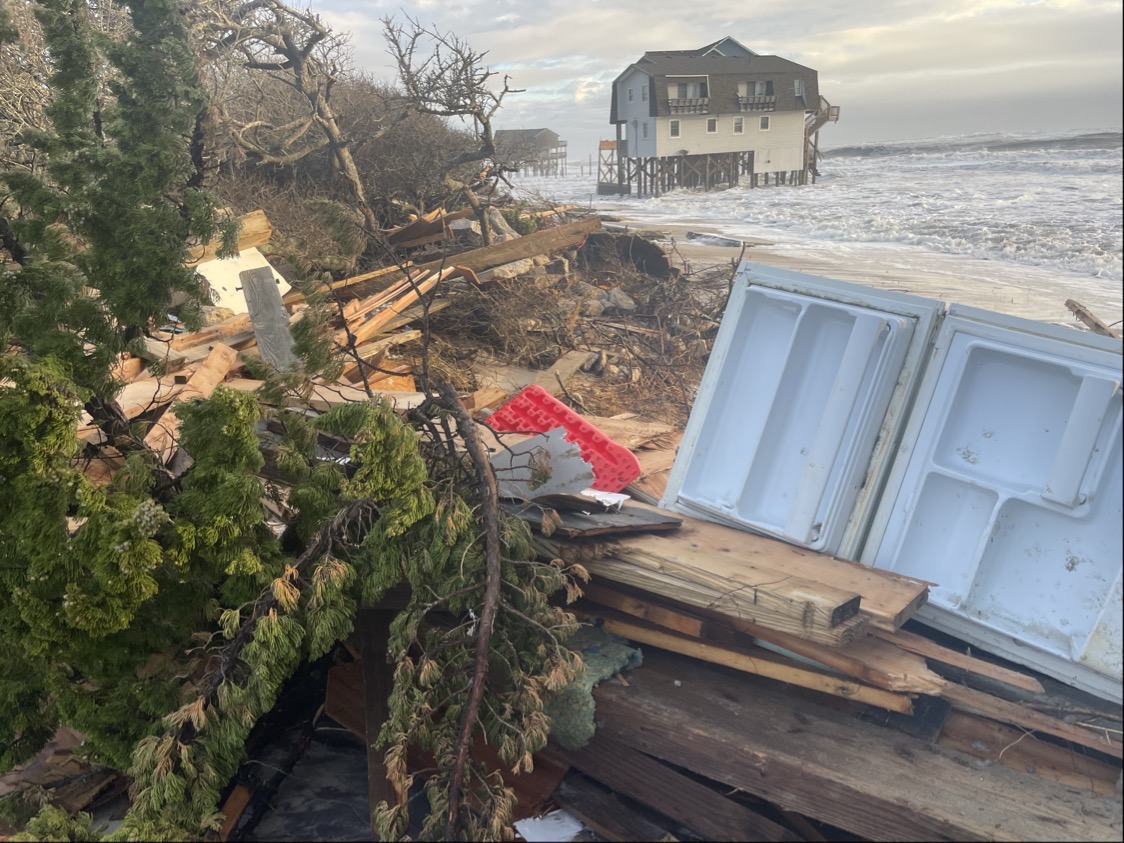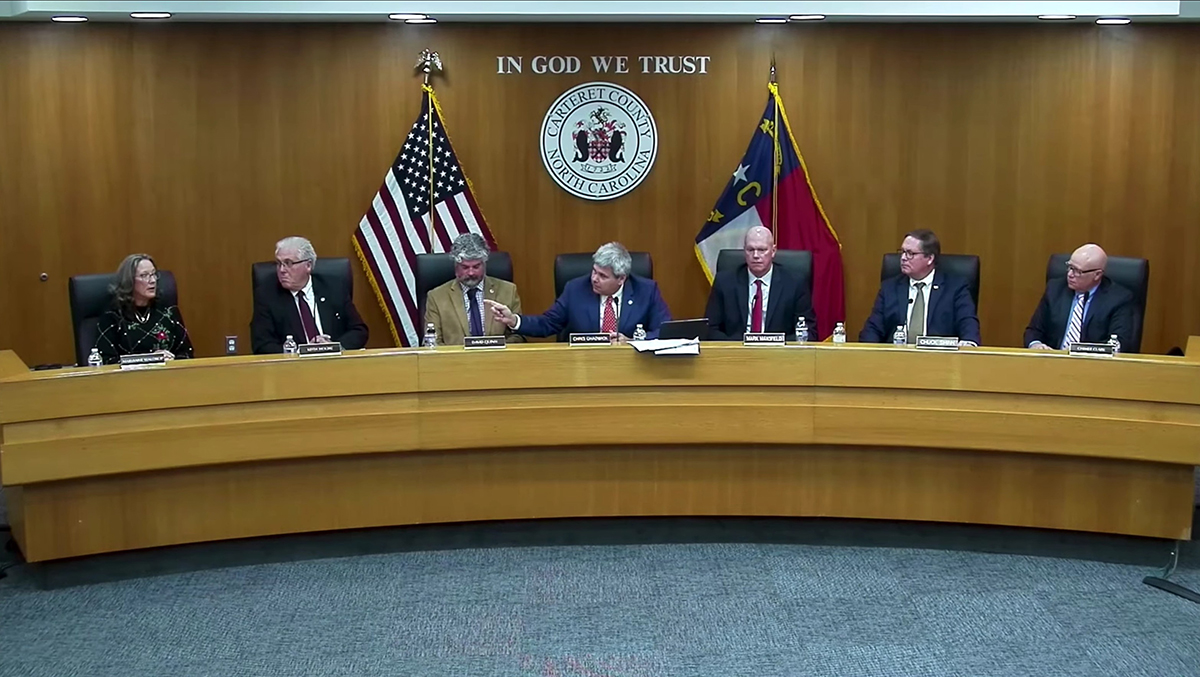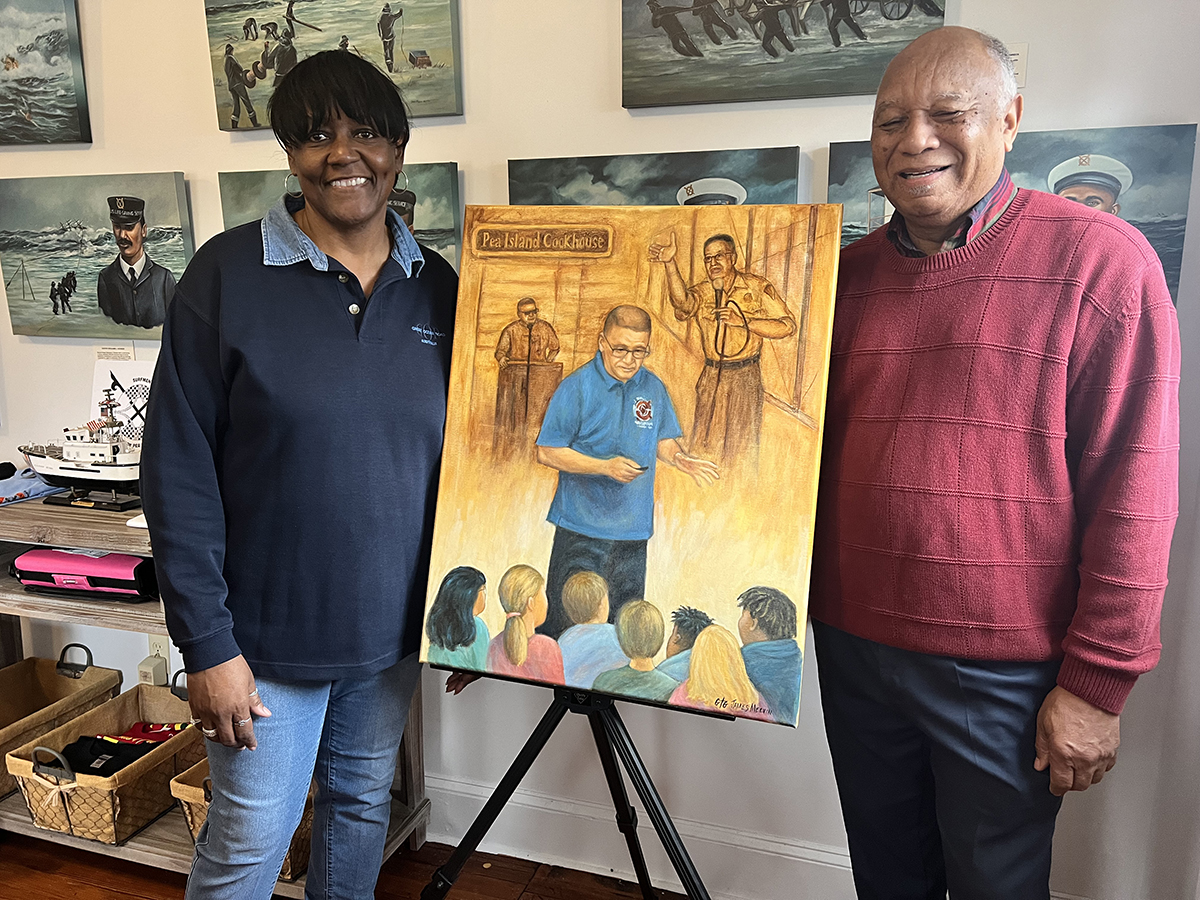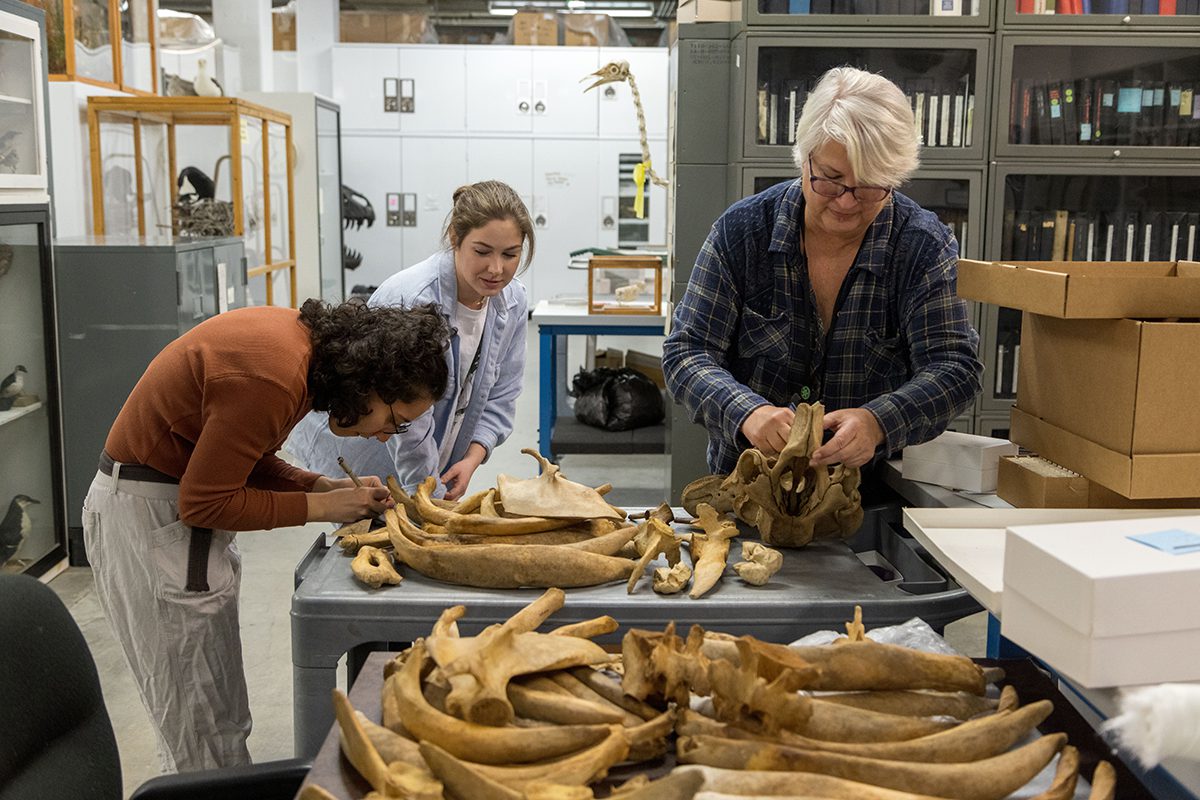
It took a lot of collaboration to get an 800-pound manatee carcass that washed up on a beach in Kill Devil Hills in early December 2021 to Lisa Gatens, the mammalogy collection manager at the North Carolina Museum of Natural Sciences in Raleigh.
The carcass was delivered in mid-December 2021 and buried in manure to decompose, leaving just the bones. After about a year, the bones were dug up, cleaned, put in a freezer to get rid of any critters, cleaned again and, as of last week, each bone was being entered into the mammalogy collections catalog.
Supporter Spotlight
With around 20,000 specimens, the collection is one of the largest regional mammal collections in the Southeast and contains study skins, tanned hides, skulls, complete skeletons, and fluid-preserved samples. This is one of numerous research collections at the museum. In addition to the mammalogy, the museum has research collections for geology, amphibians and reptiles, fish, fossils, meteorites, mollusks, non-molluscan invertebrates and birds.
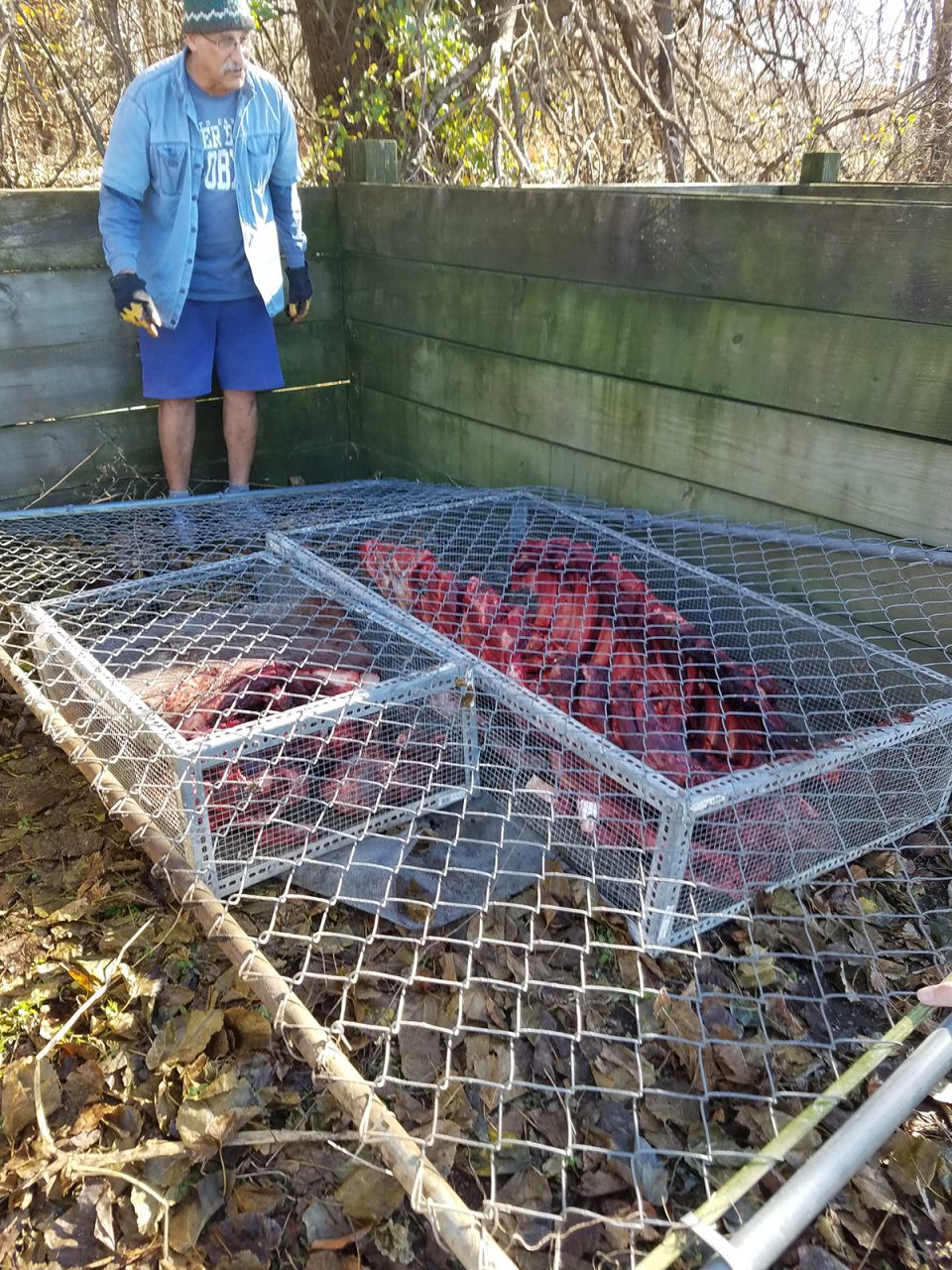
Vicky Thayer, Marine Mammal Stranding Network coordinator for the state Division of Marine Fisheries and adjunct for the College of Veterinary Medicine at N.C State University, said in an interview last week that she and partners at Cape Hatteras National Seashore, Jennette’s Pier and the University of North Carolina Wilmington were notified by the North Carolina Wildlife Resources Commission about the manatee, which was still alive when it stranded.
Thayer contacted Terri Calleson, Florida manatee recovery lead for U.S. Fish and Wildlife Service, about saving the manatee. Calleson got together a team from Fish and Wildlife Service and Alligator River National Wildlife Refuge to go to the manatee to transport it live to Florida.
“Manatees do quite well when they strand alive if they’re transported to rehabilitation,” she said but this animal died before it could be transported.
Since the animal died, the Alligator Refuge transported the manatee to the NC State Center for Marine Sciences and Technology, or CMAST, in Morehead City, for a necropsy performed by Thayer and veterinarian Dr. Craig Harms, professor in the Department of Clinical Sciences at CMAST.
Supporter Spotlight
Thayer said the manatee, a female, was emaciated and stranded alive north of the typical winter range for manatees, which do not do well when it’s cold. They suspected the death was caused by pneumonia.
After the necropsy, Keith Rittmaster, natural science curator with the North Carolina Maritime Museum in Beaufort, stepped in to help transport the remains from Morehead City to Raleigh.
He told Coastal Review last week that when he had learned that Gatens might want the skeletal remains of the manatee and that Thayer was trying arrange the storage and transportation, he offered to drive it from the CMAST to Raleigh in a pickup truck donated to the nonprofit Friends of the N.C. Maritime Museum for use at the Beaufort-based Bonehenge Whale Center. The center focuses on research and education on cetaceans, or whales, dolphins, and porpoises. Rittmaster noted the enormous amount of collaboration that took place to move the manatee, which he said is common and necessary in much of the work they do.
Gatens and Jonathan Pishney, museum head of communications, arranged to meet Rittmaster on a Sunday in mid-December 2021.
Upon Rittmaster’s delivery, they placed parts of the manatee in large boxes made of hardware cloth, which is a small-weave wire-mesh, covered them with horse manure from N.C. State’s veterinary program, and then covered the box. The hardware cloth is to prevent losing any of the smaller bones, and the boxes are fenced off to keep away scavengers and predators. “We make every effort we can to protect it,” she added.
“I’ll go out every so often, especially after a good storm to make sure that if it rains really hard, not too much manure has washed off,” Gatens explained, adding, “We left it out there for almost a year. When we got it out of the manure, it came out super clean, which sounds kind of funny that you can bury a carcass of a large marine mammal in horse manure and it comes out clean. It’s a fantastic process.”
Next, they meticulously photograph and remove the bones from the manure before hosing down the bones to get off any residual horse manure, which has a lot of sawdust in it, at the museum’s research lab near Prairie Ridge EcoStation.
Then the bones get a little scrub with soap and water, Gatens said. The bones dry outside before the being transferred downtown to the Natural Sciences Museum second basement level, “where the specimens are housed and where this manatee will spend eternity.”
Gatens said they spread the bones out on tables in their lab to finish drying before putting them in a freezer to kill anything that might be hiding in little crevices or holes. After a week in the freezer, they give the bones another thorough cleaning, making sure the bones are “beautifully, beautifully clean.”
Gatens, as of last week, was still working on cataloguing the bones. Each specimen in the collection has its own catalog number. The manatee will have its own unique number that will be written on every single bone and document to connect everything to the specimen that will be stored in boxes.
That number is also recorded by hand with indelible ink in a leatherbound book with cotton rag paper. The handwritten catalog is stored in a fireproof filing cabinet.
“We literally make a written record of everything that enters our collection,” Gatens said, adding this is the third volume of the catalog. She takes the first step of recording the data by hand before logging it in the database to keep the information secure. The handwritten information will then be entered into the online database.
“We want it in the database because the database will be searchable by people from outside. Any researcher that wants to know about our holdings of manatees or whatever can then search our online database once we get everything entered and uploaded to the website,” she said.
She reiterated that many people, organizations, agencies and volunteers are involved in the process of getting the manatee entered into the collections, from the beginning when it’s first reported after being found until it’s put away in the cases in the collection. Such as the necropsy, which is done to learn as much about the health of the animal as possible, “that’s just valuable, valuable information for them and us” Gatens said.
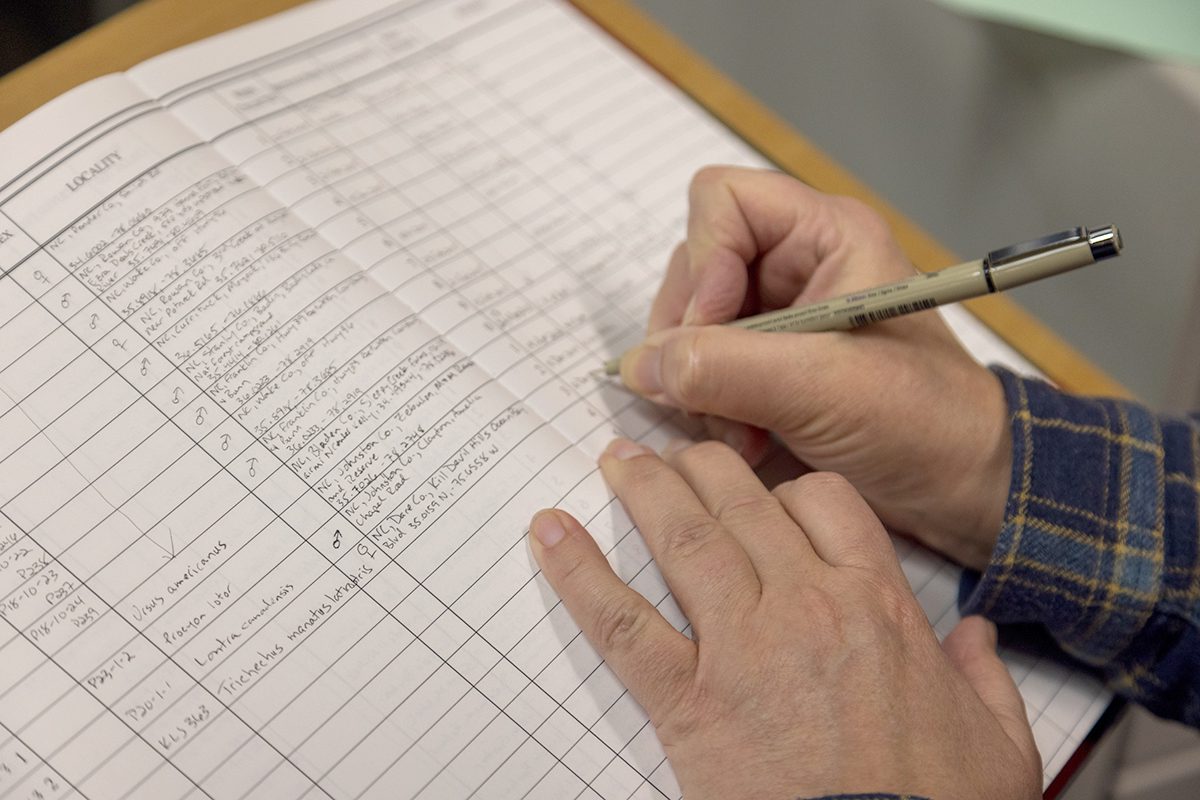
Gatens explained that her job is to maintain the research collection, a charge she takes quite seriously.
“My job is to maintain the research collection. And in doing so, providing care for each specimen that comes in,” and they’re not always manatees, sometimes it’s mice. “I take quite seriously my charge to make sure it’s protected properly, because we know that if researched collections are properly cared for, they’re going to last and be in really good shape for at least a few hundred years because that’s how old the oldest collections are. Darwin specimens are still in the Museum in London,” she said.
Some specimens in the mammalogy collection date back to the late 1800s.
When these were collected, it served more as evidence that this specimen existed at a certain place and time. When those earlier specimens were collected, the researchers did that for documenting biodiversity.
“When I first started doing this work a few decades ago, we didn’t keep tissues,” she said. Researchers realized they could use the specimen to answer questions about functional morphology, or function and structure of the organism, such as how does a limb work? How does a limb on one animal compare to another animal?
“With the interest in functional morphology, we started saving postcranial skeletons and so that’s our standard now. We save skins, skulls, and the postcranial skeletons. And who knows how they might be used,” Gatens said.
Pishney added that the museum has so many specimens and collections that can be used to answer the millions of questions out there. For example, they have on staff a bryozoan expert, one of the few worldwide who studies tiny aquatic invertebrates. She’s able to find these bryozoans in specimen collections like crabs, fish and shrimp, basically bycatch, that have been used for entirely different research up to this point.
“(Bryozoans) haven’t been studied because nobody really looked for them, nobody thought to ask that question before she came on board,” he explained. “With the new people, new questions, new, technology, it’s (the collections) just sort of a never-ending resource of a discovery. Research in itself is constantly evolving. And it’s important to have these specimens.”
In addition to preserving thousands of mammalian specimens, her department works to help living mammals.
She and Michael Cove, research curator for the mammalogy collection, serve on the Scientific Council on Mammals in the state. The group of professionals, each with a different specialty, meet periodically to review the status of every species of mammal in the state and present their information to the Wildlife Resources Commission. Gatens said they sometimes recommend a species be considered for listing as threatened or endangered at the state level and whether it is at the federal level. If it’s listed at the federal level, it’s automatically listed at the state level. However, the state could have a declining population of one species that might be OK elsewhere in its range, which means North Carolina can have species listed that aren’t listed federally.
“We can look at collections and say, for instance, this one species of jumping mouse, based on some of the Brimley specimens, we know occurred in Wake County in the late 1800s,” she said, adding she would be shocked if the jumping mouse was found here now, because they’re they occur in old fields.
The Brimley specimens are acquisitions made by Herbert H. Brimley and Clement S. Brimley, the museum’s cofounders and first curators, starting in the 1880s, according to the museum. Herbert H. Brimley between 1890 and 1899, articulated and exhibited the skeleton of Mayflower, a 50-foot right whale taken near Shackleford Banks, beginning the museum’s mammal collection.
“We can look at our collections and say we know that they occurred in this region once upon a time,” Gatens said, which “helps direct where we might want to consider looking for research that’s conservation based. The collections help direct that, too.”
The mammalogy collection will not go on display. It is only available for research. Gatens said that people can access the collection by scheduling a visit with her or contacting her to borrow specimens for research.



